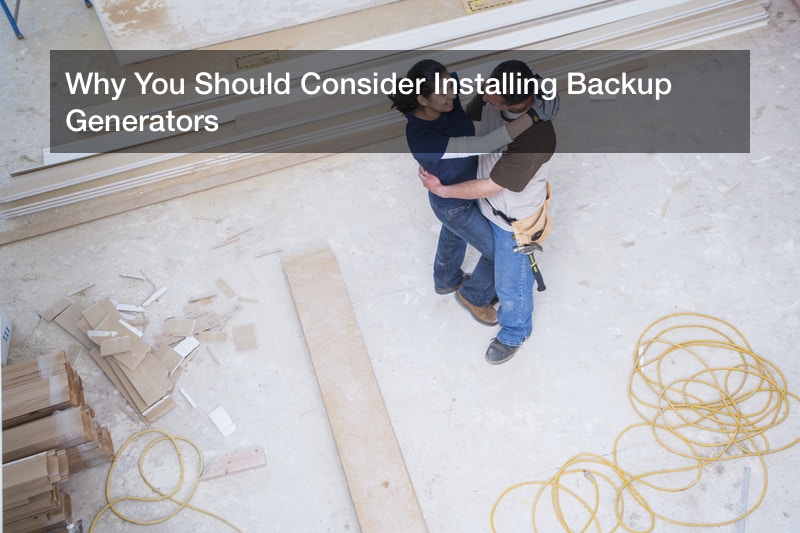
The modern world runs on electricity, and this ranges from the most modest suburban homes to the largest apartments, factories, and office buildings. For the most part, buildings are connected to the public electric utility, and these power grids can be found all across the United States. But what if a local power grid suffers a sudden failure, and dozens or hundreds of homes and buildings are left without electricity for minutes or hours at a time? This is why many business owners and homeowners alike invest in generator installation, and whole house generators can be fairly straightforward to purchase and use. So, what are some particular emergency generator installation requirements to consider, and how powerful should whole house generators be? Fortunately, professionals can be hired to help with generator installation, if need be.
The American Power Grid and Outages
The American power grid sometimes suffers failures due to aging equipment or bad weather, and some parts of the power grid are more prone to outages than other regions are. What do statistics show? The federal government started tracking data on power outages in 1984, and the numbers show that the modern electric grid suffers from power losses 285% more often than when record-keeping for this topic first began. This can be an expensive issue, since powerless buildings cannot function and perform business. Each year, power outages cost the collective American businesses some $150 billion each year, according to the Department of Energy, and weather-related disruptions are especially common. Not to mention how some buildings absolutely cannot afford to lose power, such as hospitals.
A homeowner will not like power outages, either, especially during very hot or cold weather (as the climate control utility will not function). And in warm weather, the refrigerator will be off, and the food inside may warm up too much to be safe to eat. If a power outage extends beyond four hours, the homeowner must use a food thermometer regularly and discard any perishable food that got too warm (40 degrees Fahrenheit or warmer).
All this is why generator installation is often done, and a homeowner can take advantage of this technology, too. How?
Generator Installers and Calculations
Just how powerful should a generator for the home be? Take note that some generators are more powerful and costly than others, and while generators can easily be worth the price, it is not a good idea to buy an excessively powerful and costly one for the home’s needs. Conversely, it does little good to buy a too-small generator that can’t power the house during outages. It’s not one size fits all. So, the homeowner can add up the wattage of all the utilities and electrical devices in their home, and figure out how much power is needed during a total outage. Remember that 1,000 watts make up a kilowatt, and 1,000 kilowatts constitutes one megawatt.
Now, the homeowner can visit local hardware stores and fine some generator models that fit their price range and their power needs, and that customer can consult the store’s staff to find the right generator for the job. Homeowners can also look up backup generator installation crews online, and hire a local company that has good ratings online from previous customers. It may be noted that homeowners who live in flood-prone areas should buy generators that can still function even if the house is partially submerged during heavy rain or flooding.
Generators can also be small and portable, and it is common to bring along petite generators on a camping trip, such as to power laptops and cell phones and other devices while out of the house. These small generators can also help keep portable lights on for long periods of time. Meanwhile, it’s another common strategy to bring along a small generator to a tailgate party, to power a TV and sound system in the back of a pickup truck or van or SUV. Of course, the owner must add up the wattage of all involved electronics so they can get a strong enough generator for the job.
